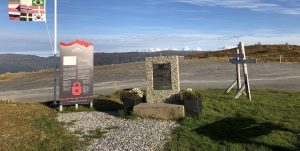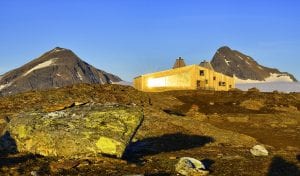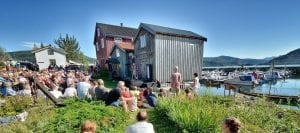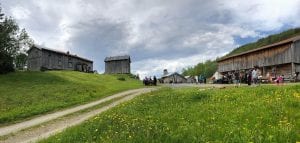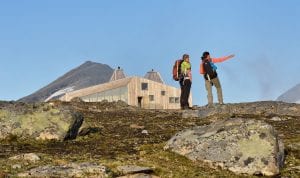In the old shipbuilders’ heyday, many wooden boats were produced in Hemnes, most of them on local farms, all with access to plentiful timber. One of the most famous boats is a replica of the ship that Leif Erikson (970–1020) sailed over a thousand years ago, when he travelled across the Atlantic and discovered the New World.
In 1926, the 42-foot ship was crafted by skilled boat-builders at Øverleirvollen farm in the valley of Leirskardalen and transported down to the fjordside village of Hemnesberget. It first set course for Bergen, in southwestern Norway. On 23 May, Captain Gerhard Folgerø and his three-man crew set out on their hazardous voyage across the Atlantic. Along the way, they stopped at the Shetland Islands, the Faeroe Islands, Iceland, Greenland, and then Newfoundland. In early August of 1926 they finally arrived in Boston. Up until then, this was the longest modern voyage for a simple ship of such modest size. Captain Folgerø and his brave crew had achieved their goal: to prove that the Vikings were perfectly capable of crossing the Atlantic in their ships, centuries before Christopher Columbus.
For many years, the Leif Erikson was displayed in its own park in Duluth, Minnesota, a state where many descendants of Norwegian immigrants live today. In 2013, a careful restoration of the replica ship was started, so that it can once again be exhibited in the park.
To read more about this ship, and how it was built by expert boatbuilders on a farm in a valley below the Okstindan mountains, please explore the links on the right.

